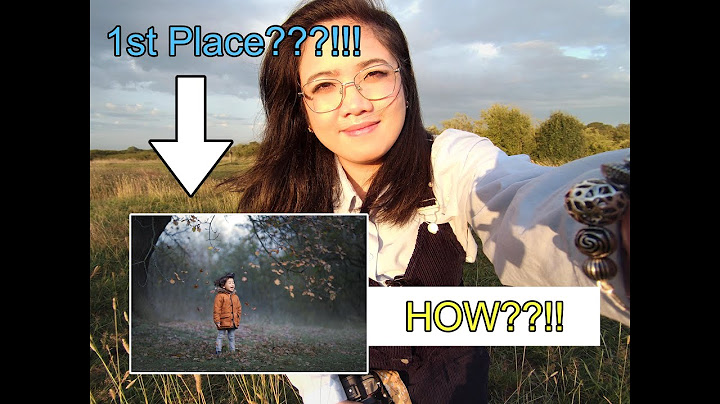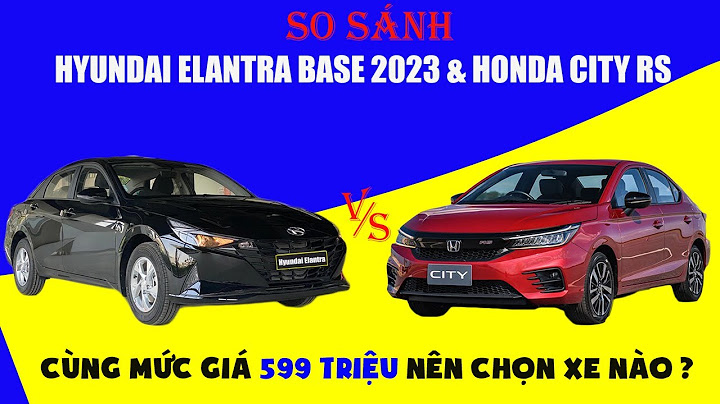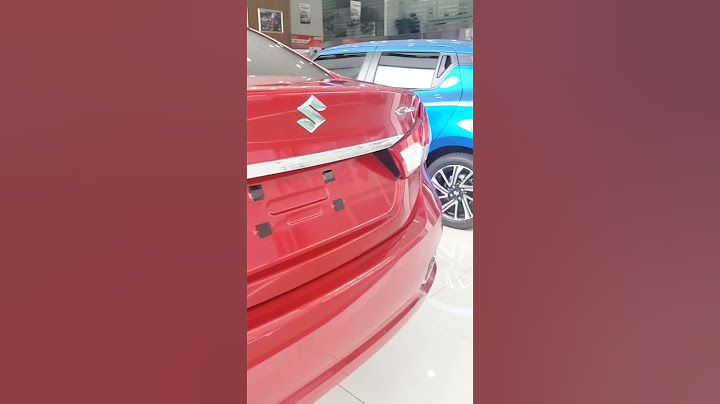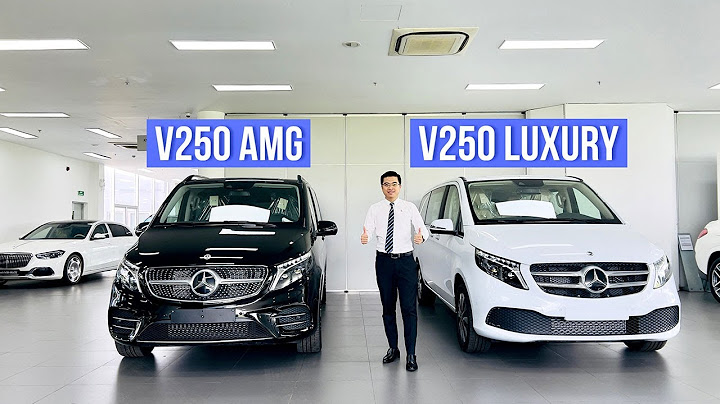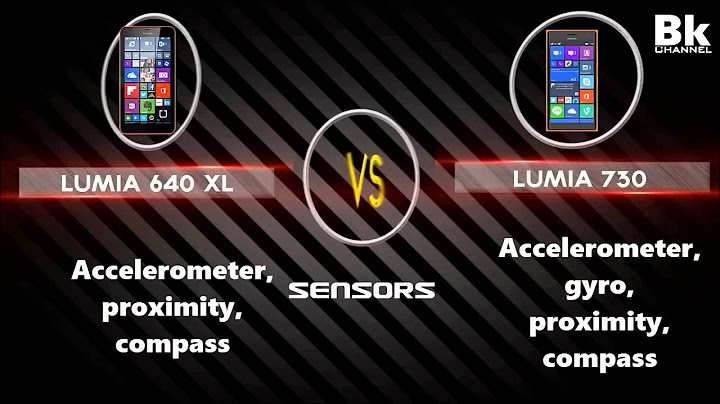Không lâu sau khi ra mắt chiếc D610, Nikon ngày hôm nay tiếp tục tung ra một máy ảnh DSLR với tên gọi Máy ảnh Nikon D5300 nhằm thay thế cho D5200 ra mắt tháng 11 năm ngoái. Ngoài thiết kế nhỏ hơn một chút, bộ xử lý ảnh mới hơn, màn hình lớn hơn thì D5300 còn là DSLR đầu tiên của Nikon được trang bị kết nối không dây WiFi và bộ định vị GPS.Được trang bị bộ cảm biến APS – Chybrid CMOS 18.0 MP, Canon 700D cho tốc độ truyền dữ liệu siêu tốc, tối ưu hóa khả năng xử lý ảnh nhờ đường truyền tín hiệu đa kênh, tăng khả năng phản ứng của máy cho ảnh đẹp bất kể tình huống nào. Ngoài ra, DIGIC 5 hỗ trợ máy chụp ảnh nhanh và chính xác cho tốc độ 5fps mang lại những hình ảnh đẹp mịn màng với màu sắc tự nhiên, chân thực ngay trong khung cảnh có nhiều nguồn chiếu sáng phức tạp.Megapixels 24.2018.00Độ phân giải hình ảnh tối đa 6000 x 4000 px5184 x 3456 pxKhảo giá sản phẩm Xem giá ngay Xem giá ngayCảm biến Sensor Kiểu cảm biến CMOSCMOSĐộ phân giải cảm biến 6045 x 4003 px5196 x 3464 pxĐường chéo cảm biến 28.21 mm26.82 mmKích thước cảm biến 23.5 x 15.6 mm22.3 x 14.9 mm Độ lớn cảm biến thực tế Show
Độ lớn cảm biến thường thể hiện chất lượng của máy ảnh. Cảm biến lớn hiệu quả hơn vì có nhiều diện tích bề mặt hơn để thu ánh sáng. Như một quy luật chung, cảm biến càng lớn thì chất lượng hình ảnh càng tốt. Máy ảnh Nikon D5300 Máy ảnh Canon EOS 700D (Diện tích: 366.6 mm² vs 332.27 mm²) Khoảng cách giữa 2 tâm pixel (Pixel pitch) Pixel pitch cho bạn biết độ gần từ tâm của một pixel đến tâm của pixel kế bên. Pixel pitch càng lớn, chúng càng xa nhau và mỗi pixel càng lớn. Pixel lớn hơn có xu hướng có tỷ lệ tín hiệu nhiễu cao hơn. 3.89 µm4.29 µm Diện tích pixel (Pixel area) Diện tích pixel ảnh hưởng đến lượng ánh sáng mỗi pixel thu thập. Pixel lớn hơn thu thập nhiều lượng sáng hơn, trong khi pixel nhỏ hơn cho độ phân giải cao hơn (chi tiết hơn) với cùng kích thước cảm biến. 15.13 µm²18.4 µm² Mật độ pixel (Pixel density) Mật độ pixel cho bạn biết số lượng triệu pixel tromg 1cm² của cảm biến. Mật độ pixel cao hơn có nghĩa là các pixel nhỏ hơn và mật độ pixel thấp hơn có nghĩa là các pixel lớn hơn. The Canon EOS 700D (called Canon T5i in some regions) and the Nikon D5200 are two digital cameras that were revealed to the public, respectively, in March 2013 and November 2012. Both are DSLR (Digital Single Lens Reflex) cameras that are equipped with an APS-C sensor. The Canon has a resolution of 17.9 megapixels, whereas the Nikon provides 24 MP. Below is an overview of the main specs of the two cameras as a starting point for the comparison.   Going beyond this snapshot of core features and characteristics, what are the differences between the Canon EOS 700D and the Nikon D5200? Which one should you buy? Read on to find out how these two cameras compare with respect to their body size, their imaging sensors, their shooting features, their input-output connections, and their reception by expert reviewers. Body comparisonAn illustration of the physical size and weight of the Canon 700D and the Nikon D5200 is provided in the side-by-side display below. The two cameras are presented according to their relative size. Three consecutive views from the front, the top, and the rear side are shown. All size dimensions are rounded to the nearest millimeter. The D5200 can be obtained in two different colors (black, red), while the 700D is only available in black.    If the front view area (width x height) of the cameras is taken as an aggregate measure of their size, the Nikon D5200 is notably smaller (5 percent) than the Canon 700D. Moreover, the D5200 is slightly lighter (4 percent) than the 700D. In this context, it is worth noting that neither the 700D nor the D5200 are weather-sealed. The above size and weight comparisons are to some extent incomplete since they do not consider the interchangeable lenses that both of these cameras require. Yet, since both cameras are based around an APS-C sensor, their respective lenses will tend to have similar dimensions and heft. You can compare the optics available for the two cameras in the Canon EF Lens Catalog (700D) and the Nikon Lens Catalog (D5200). Concerning battery life, the 700D gets 440 shots out of its LP-E8 battery, while the D5200 can take 500 images on a single charge of its EN-EL14 power pack. The adjacent table lists the principal physical characteristics of the two cameras alongside a wider set of alternatives. In case you want to display and compare another camera duo, you can use the CAM-parator app to select your camera combination among a large number of options. The price is, of course, an important factor in any camera decision. The listed launch prices provide an indication of the market segment that the manufacturer of the cameras have been targeting. The 700D was launched at a somewhat lower price (by 13 percent) than the D5200, which makes it more attractive for photographers on a tight budget. Normally, street prices remain initially close to the MSRP, but after a couple of months, the first discounts appear. Later in the product cycle and, in particular, when the replacement model is about to appear, further discounting and stock clearance sales often push the camera price considerably down. Sensor comparisonThe size of the sensor inside a digital camera is one of the key determinants of image quality. A large sensor will tend to have larger individual pixels that provide better low-light sensitivity, wider , and richer than smaller pixel-units in a sensor of the same technological generation. Further, a large sensor camera will give the photographer additional creative options when using shallow to isolate a subject from its background. On the downside, larger sensors tend to be more expensive and lead to bigger and heavier cameras and lenses. Both cameras under consideration feature an APS-C sensor, but their sensors differ slightly in size. The sensor area in the D5200 is 11 percent bigger. As a result of these sensor size differences, the cameras have format factors, respectively, of 1.6 (700D) and 1.5. Both cameras have a native aspect ratio (sensor width to sensor height) of 3:2.  With 24MP, the D5200 offers a higher resolution than the 700D (17.9MP), but the D5200 has smaller individual pixels ( of 3.91μm versus 4.31μm for the 700D). It is noteworthy in this context that the 700D is a somewhat more recent model (by 4 months) than the D5200, and its sensor might have benefitted from technological advances during this time that further enhance the light gathering capacity of its pixel-units. The resolution advantage of the Nikon D5200 implies greater flexibility for cropping images or the possibility to print larger pictures. The maximum print size of the D5200 for good quality output (200 dots per inch) amounts to 30 x 20 inches or 76.2 x 50.8 cm, for very good quality (250 dpi) 24 x 16 inches or 61 x 40.6 cm, and for excellent quality (300 dpi) 20 x 13.3 inches or 50.8 x 33.9 cm. The corresponding values for the Canon 700D are 25.9 x 17.3 inches or 65.8 x 43.9 cm for good quality, 20.7 x 13.8 inches or 52.7 x 35.1 cm for very good quality, and 17.3 x 11.5 inches or 43.9 x 29.3 cm for excellent quality prints. The 700D has on-sensor phase detect pixels, which results in fast and reliable autofocus acquisition even during live view operation. The Canon EOS 700D has a native sensitivity range from ISO 100 to ISO 12800, which can be extended to ISO 100-25600. The corresponding ISO settings for the Nikon D5200 are ISO 100 to ISO 6400, with the possibility to increase the ISO range to 100-25600. Technology-wise, both cameras are equipped with CMOS (Complementary Metal–Oxide–Semiconductor) sensors. Both cameras use a Bayer filter for capturing RGB colors on a square grid of photosensors. This arrangement is found in most digital cameras.  Consistent information on actual sensor performance is available from DXO Mark for many cameras. This service assesses and scores the color depth ("DXO Portrait"), dynamic range ("DXO Landscape"), and low-light sensitivity ("DXO Sports") of camera sensors, and also publishes an overall camera score. Of the two cameras under consideration, the D5200 offers substantially better image quality than the 700D (overall score 23 points higher). The advantage is based on 2.5 bits higher color depth, 2.7 EV in additional dynamic range, and 0.9 stops in additional low light sensitivity. The following table provides an overview of the physical sensor characteristics, as well as the sensor quality measurements for a selection of comparators.  Sensor Characteristics # Camera Model Sensor Class Resolution (MP) Horiz. Pixels Vert. Pixels Video Format DXO Portrait DXO Landscape DXO Sports DXO Overall 1. Canon 700D APS-C 17.9 5184 34561080/30p21.711.2681612. Nikon D5200 APS-C 24.0 6000 40001080/60i24.213.91284843. Canon 750D APS-C 24.0 6000 40001080/30p22.712.0919714. Canon 760D APS-C 24.0 6000 40001080/30p22.612.0915705. Canon 1200D APS-C 17.9 5184 34561080/30p21.911.3724636. Canon G7 X 1-inch 20.0 5472 36481080/60p23.012.7556717. Canon 100D APS-C 17.9 5184 34561080/30p21.811.3843638. Canon 650D APS-C 17.9 5184 34561080/30p21.711.2722629. Canon M APS-C 17.9 5184 34561080/30p22.111.28276510. Canon 600D APS-C 17.9 5184 34561080/30p22.111.57936511. Canon 550D APS-C 17.9 5184 34561080/30p22.111.57846612. Canon 500D APS-C 15.1 4752 31681080/20p21.711.56636313. Nikon D5600 APS-C 24.0 6000 40001080/60p24.114.013068414. Nikon D5500 APS-C 24.0 6000 40001080/60p24.114.014388415. Nikon D5300 APS-C 24.0 6000 40001080/60p24.013.913388316. Nikon D3200 APS-C 24.1 6016 40001080/30p24.113.211318117. Nikon D5100 APS-C 16.1 4928 32641080/30p23.513.6118380
Many modern cameras are not only capable of taking still images, but also of capturing video footage. Both cameras under consideration are equipped with sensors that have a sufficiently high read-out speed for moving images, but the D5200 provides a faster frame rate than the 700D. It can shoot movie footage at 1080/60i, while the Canon is limited to 1080/30p. Feature comparisonBeyond body and sensor, cameras can and do differ across a range of features. The 700D and the D5200 are similar in the sense that both have an optical viewfinder. The latter is useful for getting a clear image for framing even in brightly lit environments. The viewfinders of both cameras offer the same field of view (95%), but the viewfinder of the 700D has a higher magnification than the one of the D5200 (0.53x vs 0.51x), so that the size of the image transmitted appears closer to the size seen with the naked human eye. The adjacent table lists some of the other core features of the Canon 700D and Nikon D5200 along with similar information for a selection of comparators.  Core Features # Camera Model Viewfinder (Type or 000 dots) Control Panel (yes/no) LCD Specifications (inch/000 dots) LCD Attach- ment Touch Screen (yes/no) Max Shutter Speed * Max Shutter Flaps * Built-in Flash (yes/no) Built-in Image Stab 1. Canon 700Doptical n3.0 / 1040 swivel Y 1/4000s 5.0/s Y n 2. Nikon D5200optical n3.0 / 921 swivel n 1/4000s 5.0/s Y n 3. Canon 750Doptical n3.0 / 1040 swivel Y 1/4000s 5.0/s Y n 4. Canon 760Doptical Y3.0 / 1040 swivel Y 1/4000s 5.0/s Y n 5. Canon 1200Doptical n3.0 / 460 fixed n 1/4000s 3.0/s Y n 6. Canon G7 Xnone n3.0 / 1040 tilting Y 1/2000s 6.5/s Y Y 7. Canon 100Doptical n3.0 / 1040 fixed Y 1/4000s 4.9/s Y n 8. Canon 650Doptical n3.0 / 1040 swivel Y 1/4000s 5.0/s Y n 9. Canon Mnone n3.0 / 1040 fixed Y 1/4000s 4.3/s n n 10. Canon 600Doptical n3.0 / 1040 swivel n 1/4000s 3.7/s Y n 11. Canon 550Doptical n3.0 / 1040 fixed n 1/4000s 3.7/s Y n 12. Canon 500Doptical n3.0 / 920 fixed n 1/4000s 3.4/s Y n 13. Nikon D5600optical n3.2 / 1037 swivel Y 1/4000s 5.0/s Y n 14. Nikon D5500optical n3.2 / 1037 swivel Y 1/4000s 5.0/s Y n 15. Nikon D5300optical n3.2 / 1037 swivel n 1/4000s 5.0/s Y n 16. Nikon D3200optical n3.0 / 921 fixed n 1/4000s 4.0/s Y n 17. Nikon D5100optical n3.0 / 921 swivel n 1/4000s 4.0/s Y n Notes: *) Information refers to the mechanical shutter, unless the camera only has an electronic one.
One differentiating feature between the two cameras concerns the touch sensitivity of the rear screen. The 700D has a touchscreen, while the D5200 has a conventional panel. Touch control can be particularly helpful, for example, for setting the focus point. Both cameras have an articulated rear screen that can be turned to be front-facing. This feature will be particularly appreciated by vloggers and photographers who are interested in taking selfies. The Nikon D5200 has an intervalometer built-in. This enables the photographer to capture time lapse sequences, such as flower blooming, a sunset or moon rise, without purchasing an external camera trigger and related software. Concerning the storage of imaging data, both the 700D and the D5200 write their files to SDXC cards. Both cameras can use UHS-I cards, which provide for Ultra High Speed data transfer of up to 104 MB/s. Connectivity comparisonFor some imaging applications, the extent to which a camera can communicate with its environment can be an important aspect in the camera decision process. The table below provides an overview of the connectivity of the Canon EOS 700D and Nikon D5200 and, in particular, the interfaces the cameras (and selected comparators) provide for accessory control and data transfer.  Input-Output Connections # Camera Model Hotshoe Port Internal Mic / Speaker Microphone Port Headphone Port HDMI Port USB Port WiFi Support NFC Support Bluetooth Support 1. Canon 700DYstereo / monoY-mini2.0- 2. Nikon D5200Ystereo / monoY-mini2.0- 3. Canon 750DYstereo / monoY-mini2.0YY- 4. Canon 760DYstereo / monoY-mini2.0YY- 5. Canon 1200DYmono / mono--mini2.0- 6. Canon G7 X-stereo / mono--micro2.0YY- 7. Canon 100DYmono / monoY-mini2.0- 8. Canon 650DYstereo / monoY-mini2.0- 9. Canon MYstereo / monoY-mini2.0- 10. Canon 600DYmono / monoY-mini2.0- 11. Canon 550DYstereo / -Y-mini2.0- 12. Canon 500DYmono / mono--mini2.0- 13. Nikon D5600Ystereo / monoY-mini2.0YYY 14. Nikon D5500Ystereo / monoY-mini2.0Y 15. Nikon D5300Ystereo / monoY-mini2.0Y-- 16. Nikon D3200Ymono / monoY-mini2.0- 17. Nikon D5100Ymono / monoY-mini2.0-
Both the 700D and the D5200 have been discontinued, but can regularly be found used on ebay. The D5200 was replaced by the Nikon D5300, while the 700D was followed by the Canon 750D. Further information on the features and operation of the 700D and D5200 can be found, respectively, in the Canon 700D Manual (free pdf) or the online Nikon D5200 Manual. Review summarySo what is the bottom line? Is the Canon 700D better than the Nikon D5200 or vice versa? A synthesis of the relative strong points of each of the models is listed below.  Arguments in favor of the Canon EOS 700D:
Advantages of the Nikon D5200:
If the count of individual advantages (bullet points above) is taken as a guide, the D5200 emerges as the winner of the match-up (9 : 6 points). However, the pertinence of the various camera strengths will differ across photographers, so that you might want to weigh individual camera traits according to their importance for your own imaging needs before making a camera decision. A professional wildlife photographer will view the differences between cameras in a way that diverges from the perspective of a family photog, and a person interested in architecture has distinct needs from a sports shooter. Hence, the decision which camera is best and worth buying is often a very personal one. 700D 06:09 D5200 How about other alternatives? Do the specifications of the Canon 700D and the Nikon D5200 place the cameras among the top in their class? Find out in the latest Best DSLR Camera listing whether the two cameras rank among the cream of the crop. In any case, while the comparison of the spec-sheets of cameras can offer a general idea of their imaging potential, it remains incomplete and does no justice, for example, to the way the 700D or the D5200 perform in practice. User reviews, such as those found at amazon, can sometimes inform about these issues, but such feedback is often incomplete, inconsistent, and biased. Expert reviewsThis is why hands-on reviews by experts are important. The following table reports the overall ratings of the cameras as published by some of the major camera review sites (amateurphotographer [AP], cameralabs [CL], digitalcameraworld [DCW], dpreview [DPR], ephotozine [EPZ], photographyblog [PB]). As can be seen, the professional reviewers agree in many cases on the quality of different cameras, but sometimes their assessments diverge, reinforcing the earlier point that a camera decision is often a very personal choice. Care should be taken when interpreting the review scores above, though. The ratings were established in reference to similarly priced cameras that were available in the market at the time of the review. Hence, a score should always be seen in the context of the camera's market launch date and its price, and comparing ratings of very distinct cameras or ones that are far apart in terms of their release date have little meaning. Also, kindly note that some of the listed sites have over time developped their review approaches and their reporting style.   Other camera comparisonsDid this review help to inform your camera decision process? In case you are interested in seeing how other cameras pair up, just make your choice using the following search menu. Alternatively, you can follow any of the listed hyperlinks for comparisons that others found interesting.
Specifications: Canon 700D vs Nikon D5200Below is a side-by-side comparison of the specs of the two cameras to facilitate a quick review of their differences and common features. |










